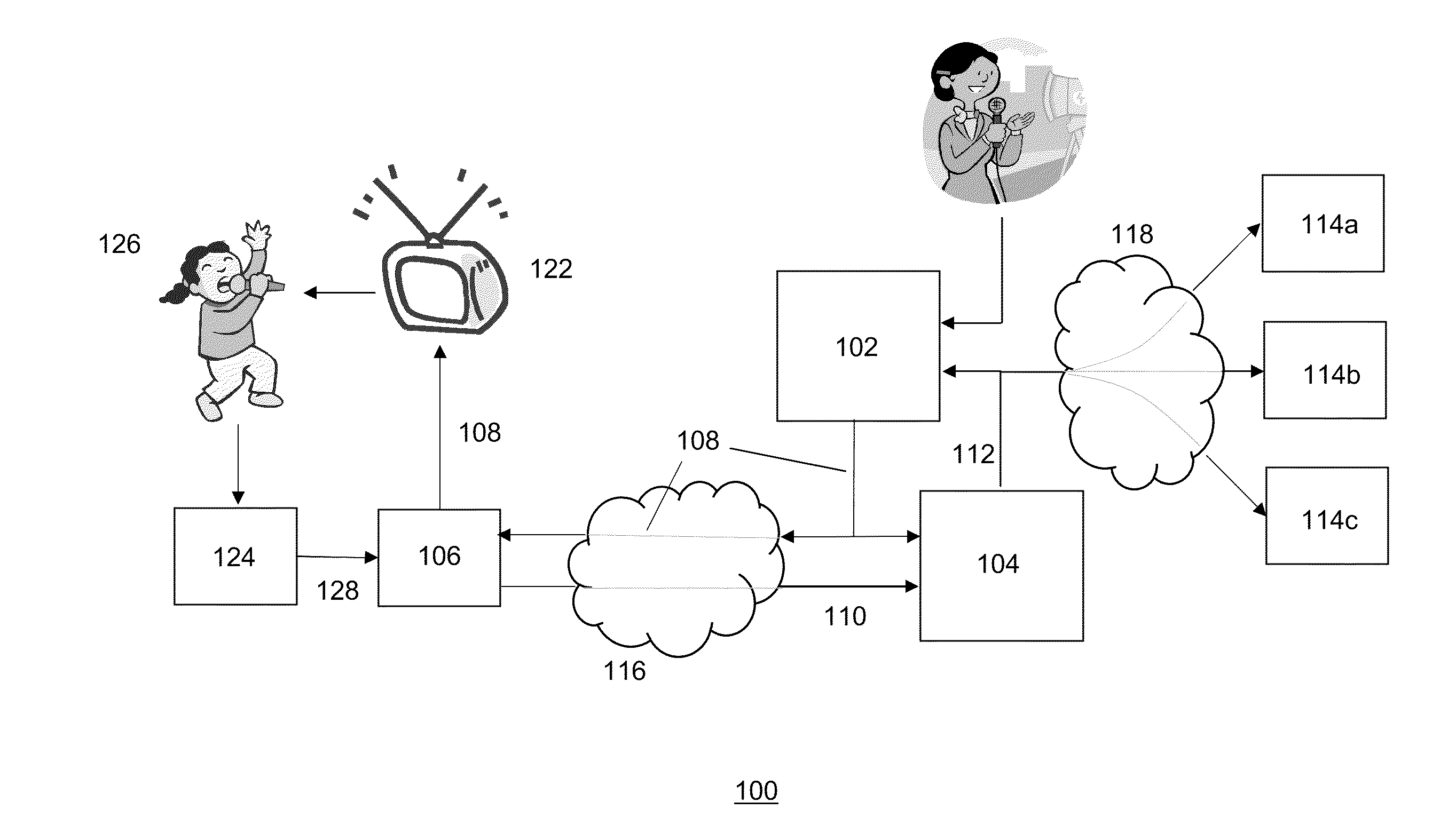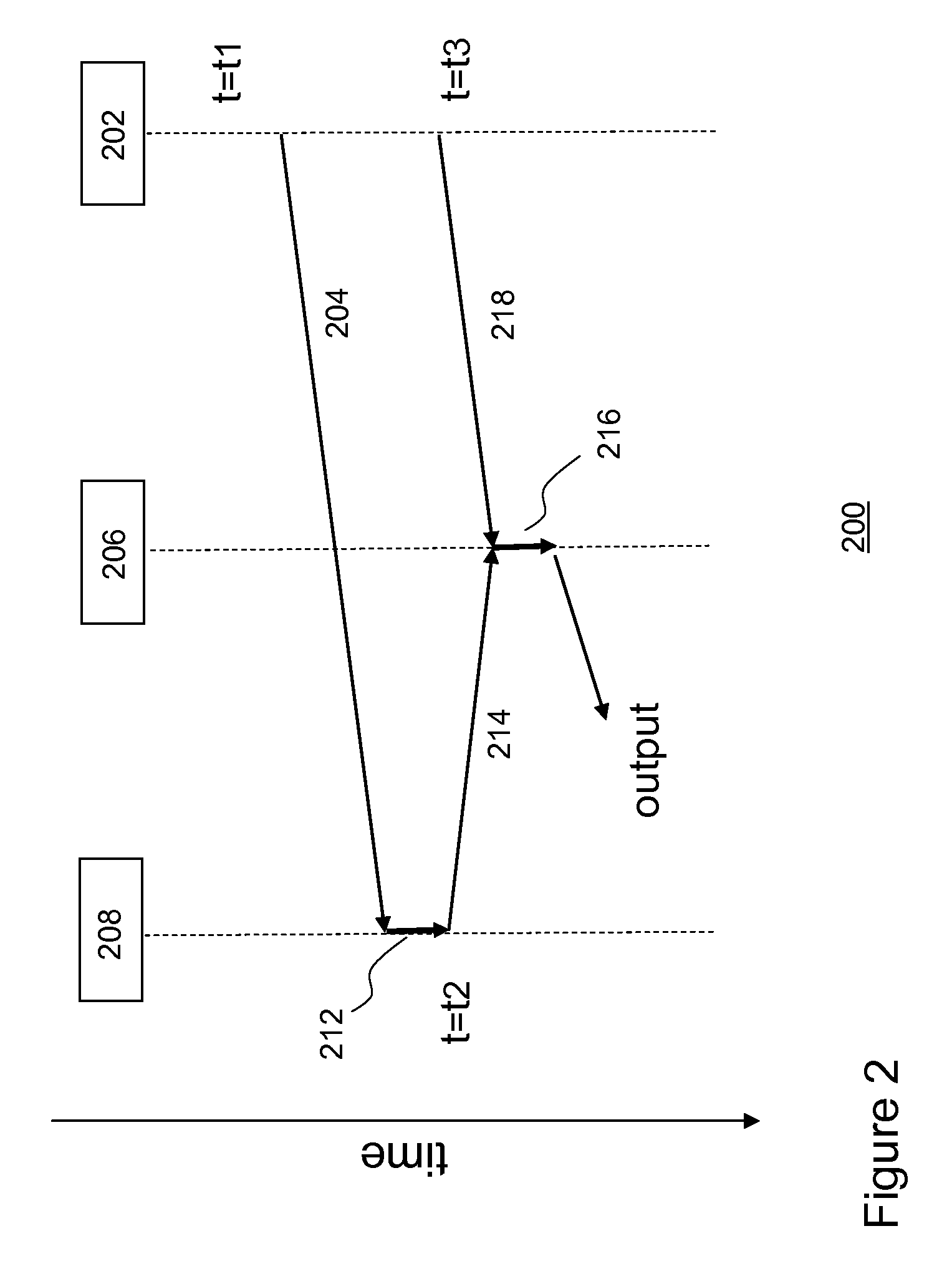Generating a Stream Comprising Synchronized Content
a technology of synchronized content and stream, applied in the direction of electronic editing digitised analogue information signals, instruments, television systems, etc., can solve the problems of limited participation of current viewers in television broadcasts, inconvenient visual interactivity, and inability to interact with program conten
- Summary
- Abstract
- Description
- Claims
- Application Information
AI Technical Summary
Benefits of technology
Problems solved by technology
Method used
Image
Examples
Embodiment Construction
[0037]FIG. 1 illustrates a schematic of a system 100 generating a stream comprising interactive content known from the prior art. The system, which is capable of providing interactive broadcast services to one or more participating users, comprises a multimedia transmission system 102, e.g. a studio capable of producing a television broadcast signal and / or a multimedia server in the network, a video mixer 104 and a home-located terminal or a home-located terminal system 106 of a participating user.
[0038]A studio 102 may be generally defined as any installation or system configured for producing a television signal and / or a multimedia signal. The studio may comprise one or more content servers, recording equipment and / or transmission equipment, e.g. a head-end, configured for transmitting the recorded content to the terminals. The video mixer 104 mixes the various streams 108,110, typically multimedia streams, in the interactive broadcast into one output stream 112, which is transmit...
PUM
 Login to View More
Login to View More Abstract
Description
Claims
Application Information
 Login to View More
Login to View More - R&D
- Intellectual Property
- Life Sciences
- Materials
- Tech Scout
- Unparalleled Data Quality
- Higher Quality Content
- 60% Fewer Hallucinations
Browse by: Latest US Patents, China's latest patents, Technical Efficacy Thesaurus, Application Domain, Technology Topic, Popular Technical Reports.
© 2025 PatSnap. All rights reserved.Legal|Privacy policy|Modern Slavery Act Transparency Statement|Sitemap|About US| Contact US: help@patsnap.com



